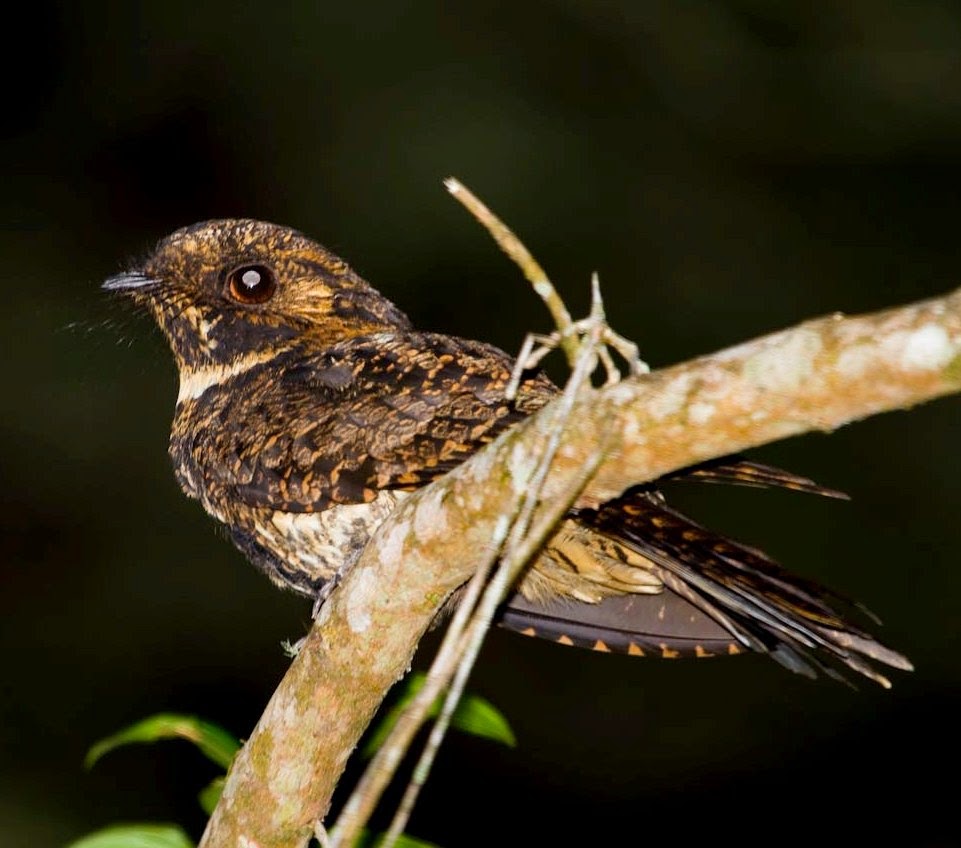 |
| Photo by Edson Endrigo (Birds Iporanga) |
Common name:
silky-tailed nightjar (en); bacurau-rabo-de-seda (pt); engoulevent à queue de soie (fr); chotacabras coladeseda (es); seidennachtschwalbe (de)
Taxonomy:
Order Caprimulgiformes
Family Caprimulgidae
Range:
This species has two disjunct subspecies. A.s. sericocaudatus is found in south-eastern Brazil, south-eastern Paraguay and extreme north-western Argentina. A.s. mengeli is found in eastern Peru and north-western Bolivia, also with scattered records across north-central Brazil.
Size:
These birds are 24-31 cm long and weigh 60-100 g.
Habitat:
The silky-tailed nightjar is mostly found in moist tropical forests, favouring forest clearings and forests edges, but also uses second growths, gallery forests and swamp forests. They are present from sea level up to an altitude of 600 m.
Diet:
They feed on various insects, including beetles, crickets, grasshoppers and ants.
Breeding:
Silky-tailed nightjars appear to be monogamous and the northern subspecies A.s. mengeli breeds in August-December. The female lays 2 eggs directly on the forest ground, either on bare ground or among the leaf litter. The eggs are pale pinkish-orange with dark maroon specks. The eggs are incubated by both sexes for about 18 days. The chicks are fed by both parents and start flying short distances 11-12 days after hatching, but remain in the nest-site area until they are about 24 days old.
Conservation:
IUCN status – LC (Least Concern)
This species has a very large breeding range and is described as rare and patchily distributed. The population is suspected to be in decline owing to ongoing habitat destruction, but it is not threatened at present.







